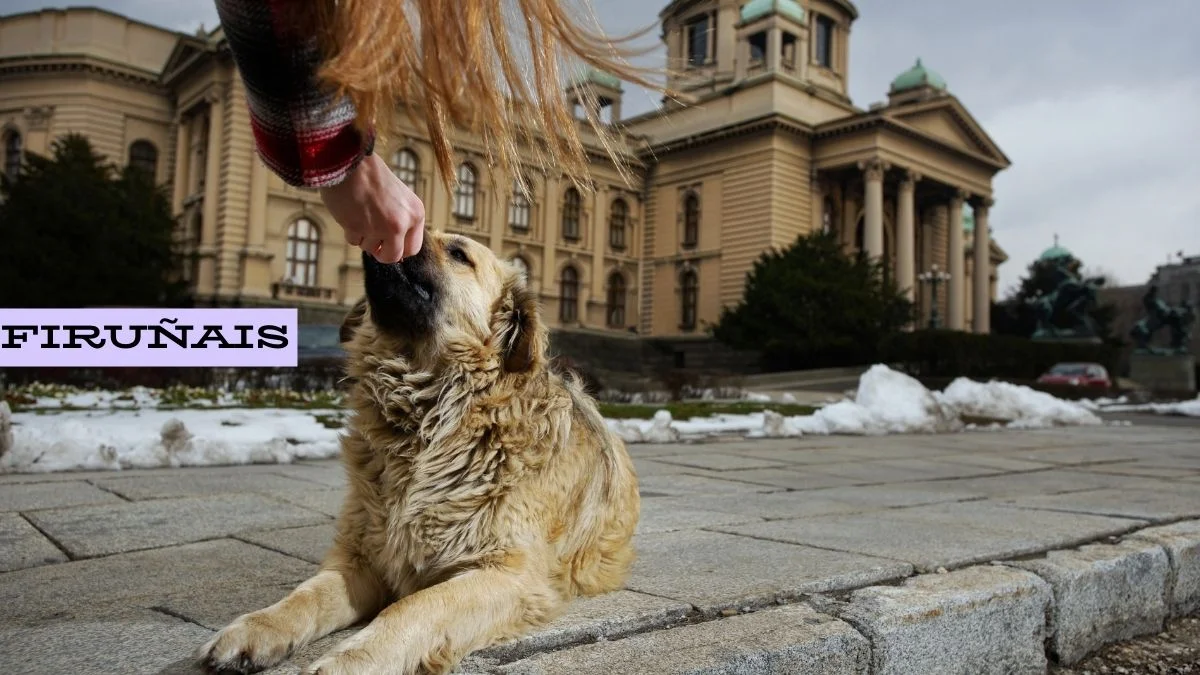In Latin American way of life, specially in Mexico, the name “Firuñais” or “Firulais” resonates with a deep, endearing familiarity. It’s greater than only a nickname for a dog—it carries an array of meanings, social institutions, and funny connotations. This article dives into the linguistic roots, folklore, and the cultural effect of “Firuñais,” unearthing the rich testimonies that make it a beloved term.
The Linguistic Origin of “Firuñais” or “Firulais”
The origins of “Firulais” have intrigued language enthusiasts for many years. While its specific beginning is difficult to pin down, it’s believed to have emerged from a playful or slang adaptation of Spanish phrases that mimic sounds or affectionate nicknames. Some recommend it could derive from a mix of Spanish and local dialects, evolving over time to grow to be a cross-to name for puppies without formal names.
Folklore and Cultural Stories Surrounding “Firuñais”
In Latin America, folklore has long embraced names like “Firulais” for its humor and relatability. Over the years, testimonies have grown round dogs named “Firulais,” where they’re depicted as dependable, scrappy, or even mischievous characters. These memories regularly celebrate the resilience and allure of road dogs, casting “Firulais” as a image of strength and independence.
The Cultural Evolution of “Firulais” Across Generations
The term “Firulais” has not only persevered over generations however has grown in popularity. Originally, it changed into a nickname, however now it has a extra giant association with stray puppies throughout Latin America. Generational shifts in media and artwork have bolstered its endearing photograph, embedding it into each day conversations and public narratives.
Why “Firuñais” is Often Used for Stray Dogs
The call’s connection to stray dogs has practical and cultural reasons. Many humans characteristic this affiliation to the fact that strays, often anonymous, obtain this label as a term of affection. It’s less difficult for human beings to recognize and hook up with a stray whilst it has a acquainted, catchy name like “Firulais.”
The Impact of “Firuñais” on Mexican Pop Culture
Mexican popular culture has warmly adopted “Firulais,” because it seems in films, television shows, or even tune. The individual of the common-or-garden, resilient canine named “Firulais” embodies the spirit of ordinary heroes in Mexican media. This considerable usage enables the term stay applicable and cherished.
Use of “Firulais” in Everyday Language
In casual communique, “Firulais” has advanced right into a nickname used for pets, kids’s toys, and extra. People confer with dogs affectionately as “Firulais” despite the fact that the canine has a extraordinary given name. It’s a part of the language that conveys warmth and a touch of humor.
The Role of Humor in the Name “Firulais”
Humor is relevant to why “Firulais” is so extensively embraced. The name inspires a snigger, making it clean to use whilst regarding dogs in a pleasant or comedic manner. This humor permits the term to stay playful and flexible across various contexts.
The Name “Firulais” and Its Connection to Social Issues
Interestingly, the use of “Firulais” circuitously raises awareness of the stray dog population in lots of Latin American cities. In calling attention to those animals, communities additionally discuss the want for accountable pet ownership and stray animal aid.
Differences in Interpretation Across Latin America
Though “Firulais” is famous in Mexico, its meaning and utilization vary throughout Latin America. Some regions use the name more affectionately, even as others partner it in particular with stray or avenue-clever dogs, each including its precise cultural interpretation to the term.
The Influence of Spanish Language at the Spread of “Firuñais”
The Spanish language has been a effective device in popularizing “Firuñais.” The ease with which Spanish speakers throughout Latin America relate to and apprehend the time period has allowed it to unfold fast, evolving through regional dialects and cultural nuances.
“Firuñais” in Art and Literature
Artists and writers have found notion in “Firulais” as properly. Depicting loyal or courageous street puppies named “Firulais” brings relatability and cultural relevance to their works, emphasizing values like loyalty, independence, and resilience in normal lifestyles.
Comparison with Other Cultural Nicknames for Animals
Just as English speakers would possibly name a stray “Spot” or “Buddy,” other cultures have similar phrases. “Firulais” joins a regular tradition of making casual names that capture affection and humor, making it a super cultural healthy.
The Future of “Firulais” in Popular Culture
With each passing yr, “Firulais” profits more presence in popular media, so it’s likely the call will continue to grow. As new generations encounter the term in films, social media, or art, “Firulais” is sure to stay a cherished part of cultural language.
Conclusion
The name “Firulais” is a fascinating, resilient a part of Latin American subculture, reflecting humor, affection, and a completely unique view of the normal stray dog. This endearing time period is here to stay, representing a bond with the frequently-overlooked animals that populate city streets, and it serves as a lasting reminder of the love and humor that permeate the tradition.
FAQs
Why is the name “Firulais” so famous in Mexico?
The name “Firulais” is widely used because of its funny and endearing nature, making it an excellent name for stray or unnamed dogs.
Is “Firuñais” the same as “Firulais”?
Yes, both phrases are used interchangeably, even though “Firulais” is more commonplace in famous tradition.
How did “Firulais” begin getting used for puppies?
Over time, the name have become associated with dogs, especially strays, due to its pleasant and approachable sound.
Are there different names similar to “Firulais” in Latin America?
While “Firulais” is iconic, some regions use versions or similar nicknames, but “Firulais” stays the most recognized.
What does “Firulais” constitute in Latin American tradition?
It symbolizes humor, affection, and a cultural connection to stray puppies, reflecting the resilience and endearment closer to animals in normal existence.














